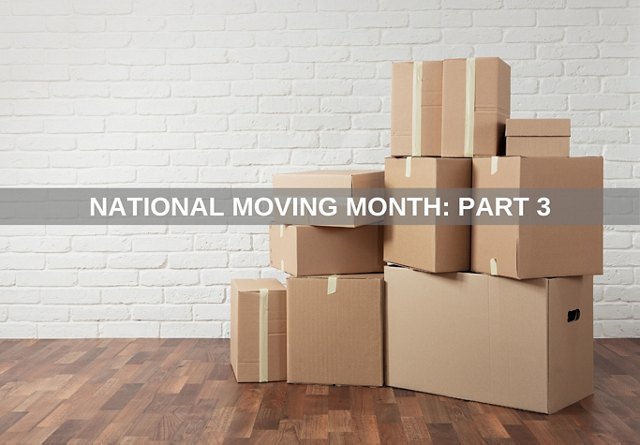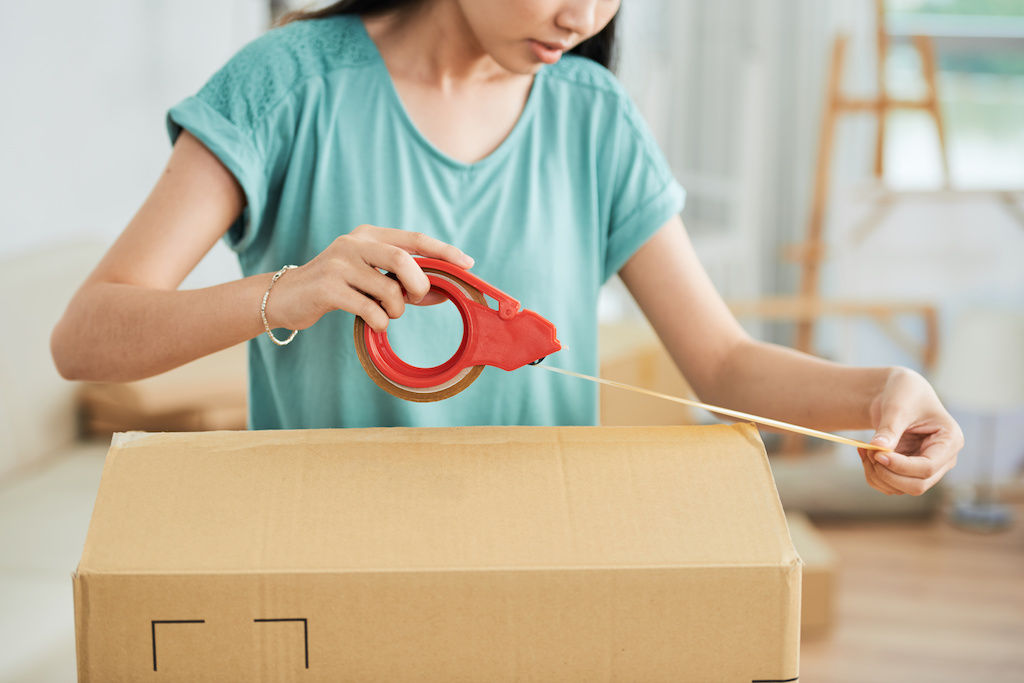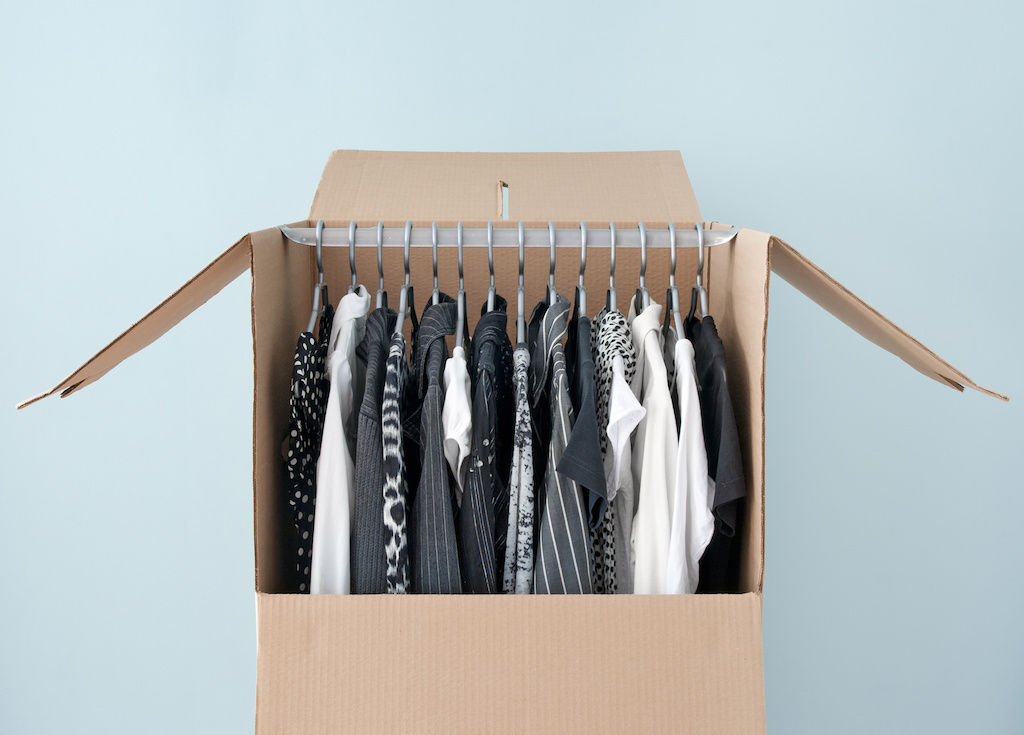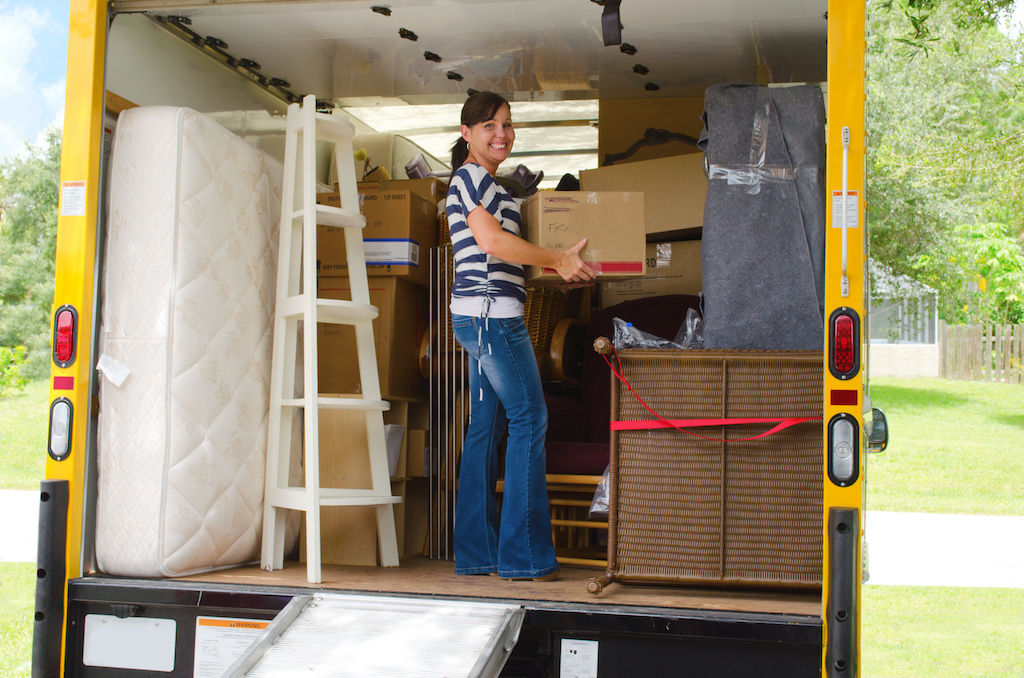National Moving Month: Best Practices for Packing and Prepping to Move
One of the hardest parts about moving is the packing, and one of the hardest parts about the packing is getting started. In this part of our National Moving Month Series, we’re going to unpack everything about packing for a move to help you take that first step.
Go Room by Room
Just like you go room by room making piles for donation, consignment and trash, you also go room by room when packing. This helps keep relevant items together, which makes labeling easier, thus, making the entire moving process run smoother.
Tonia Tomlin, a professional organizer for over 14 years and founder of Sorted Out, urges people, as a general rule, to size up each room individually and prioritize labeling.
“After you’ve purged your home of everything you don’t want or need, it’s time to pack,” Tomlin says. “Size up your kitchen, then your bedroom, living room, and so on. Visualize how much you have, get dish packing boxes, wardrobe boxes – or reusable plastic bins for the green movers. Size up how many you’ll need for every room. You can return the rest of what you don’t use later. Then, labeling properly for the destination for each box will help your movers or your friends know exactly where they need to go.”
An efficient, space-saving tip: Use your laundry hampers, open-top baskets, decorative linen crates and suitcases as packing boxes. Sometimes, these are a better fit for certain items in the house.
Moving Essentials Bag and Personal Essentials Bag
While packing and unpacking during a move, it can be difficult to keep on-demand items on-hand. Moving experts at Two Men and A Truck recommend saving yourself some trouble by making sure you have what you need easily accessible for at least a few days pre- and post-move.
“Make sure you pack an ‘essentials’ bag – things like a toothbrush, chargers, so on – that you can access right away at your new home,” says communications writer Erik Sargent from the nationally known moving company.
Pack bags for:
- Personal items: a change of clothes, toiletries, medications, hand soap, a towel, important documents (insurance information, family records, etc.), and any other personal items you may use on a daily basis that will keep your life on track
- Food items: designate a bag for provisions and snacks
- Moving materials: create a kit full of packing materials such as tape, labels, padding for boxes, scissors, tape measurer, anything that relates to the packing process.
Leave any cleaning supplies unpacked throughout the entire move. Once you have everything out of your current place and into your new apartment, then you’ll have to clean up after yourself. Make it to where you aren’t stressing when you’re on your last leg.
Tips for Packing Different Items
It’s not until you finally get to the packing that you realize not only how much you have but how different everything is, requiring a change in pace each time you switch rooms or shelves. Here are some tips on how to approach some of the main stuff:
Wall hangings: Take down any artwork, framed pictures or wall hangings first. These are easily forgotten in the rush of a move. When you take them down first, it makes you feel that you’re already making progress. Pack small frames together wrapped in paper. Any extra-large artwork can be propped up against the wall in bubble wrap.
Dishes: Dishes are unique in their own right and demand gentle handling of each and every piece. Packing paper is your best friend at this time. Fill the bottom of the box with lots of it to keep everything still. When you’ve wrapped every item and put them into the dish box vertically (like vinyl albums), add more crumpled packing paper on top and in crevices. Since dishes are heavy, make sure you space them out between boxes. Feel free to incorporate small kitchen appliances and other fragile items such as vases or lamp bases into these boxes as well and label the boxes “fragile.”
Books: Your books, along with any media items (movies or games), can all be packed together. However, pack the books sparingly, spacing them out with other items. Or, keep all the books together, just in smaller boxes. Neither you nor the movers will appreciate back-breaking boxes, and book boxes can get heavy pretty quickly. If you’re using very large bins or boxes, feel free to take up any of the open space within the box for pillows, blankets or other lighter items.
Electronics: Before packing your electronics, go to each television, game system and computer and take a picture of the hookup configuration. Even if you’re technologically savvy, this will minimize the time it takes to hook everything up in your new place. Next, remove any batteries from remotes and electronics so they don’t overheat during your move. Then, try to pack all electronic equipment in their original boxes, if you have them. Otherwise, get the packing paper and bubble wrap and wrap each generously and secure with tape. Label all cables and try to keep them together.
Clothes: When it comes to packing your hanging clothes, there are two things you can do - either use a wardrobe box, where your clothing can continue to hang and be moved in bulk, or simply move your clothes as is on their hangers and laid over other items packed in your vehicle. A wardrobe box is more important in the case that you hire movers. It ensures the safety of your clothes in the course of a move. Plus, it makes it a lot easier to unpack right after moving. For your folded clothes, use your suitcases and roll each item, filling every small space with some type of clothing.
Personal or Sentimental Items: Scott Michael, president of the American Moving and Storage Association (AMSA), suggests that even though movers do not mind moving sentimental or personal items, you should take care of your most prized, irreplaceable personal possessions yourself. “This could include photo albums, travel documents, letters, insurance, or just anything you yourself could not replace,” Michael says. “Pack these all together and hold it back for you to move personally.”
Packing your DIY Moving Truck or Vehicles
If you’re going the DIY moving route, then you must be enlisting friends and family to help with the move. In this case, the first rule is to finish packing before your helpers show up - and providing pizza can always be an extra incentive. Sargent recommends starting with boxes and then loading furniture.
“When loading a moving truck yourself, you’ll want to make sure you always stack items from the floor to the ceiling while loading,” Sargent says. “Stack boxes by the appropriate weight, with the heavy items being on the bottom. Load moving boxes into the truck first, then load furniture, and place loose or non-stackable items on top of these pieces of furniture. Make sure all items in the truck are secured with straps and bungee cords before moving.”
Finish Packing, and Make Some Calls
In the final week of your packing, prepare for disconnections and transfers of utilities. Here are just a couple of tips for checking these final items off of your prep checklist:
- Call Your Utilities Providers: Reach out to your cable, internet, electricity and renters insurance providers to schedule a transfer or cancellation of service.
- Change Your Address: The week before your move, change your address. This way, your packages will make it to your new apartment and your bills and credit card statements can arrive without any hassles.

Our Moving Series
- PART 1: There are two main factors at play when deciding how you’re going to move: time and money. What should you consider if you want to move on your own or hire a moving company?
- PART 2: It’s time to sort and declutter before you start to pack. Let’s talk about the process of shedding the excess and how to do it in a healthy way.
The information presented on or through this Website is made available solely for general information purposes. We do not warrant the accuracy, completeness, or usefulness of this information. Any reliance you place on such information is strictly at your own risk. We disclaim all liability and responsibility arising from any reliance placed on such materials by you or any other visitor to this Website, or by anyone who may be informed of any of its contents. Any reference to amenities, services, rules, policies, or procedures at a Greystar apartment community is general in nature, and each Greystar apartment community may have amenities, services, rules, policies, and procedures that differ from those referenced on this Website. Please consult with your Greystar apartment community for the exact amenities, services, rules, policies, or procedures applicable.
This Website may include content provided by third parties, including materials provided by other users, bloggers, and third-party licensors, syndicators, aggregators, and/or reporting services. All statements and/or opinions expressed in these materials, and all articles and responses to questions and other content, other than the content provided by Greystar, are solely the opinions and the responsibility of the person or entity providing those materials. These materials do not necessarily reflect the opinion of Greystar. We are not responsible, or liable to you or any third party, for the content or accuracy of any materials provided by any third parties. The information contained within does not relate to Greystar Investment Group, LLC’s investment advisory business.






